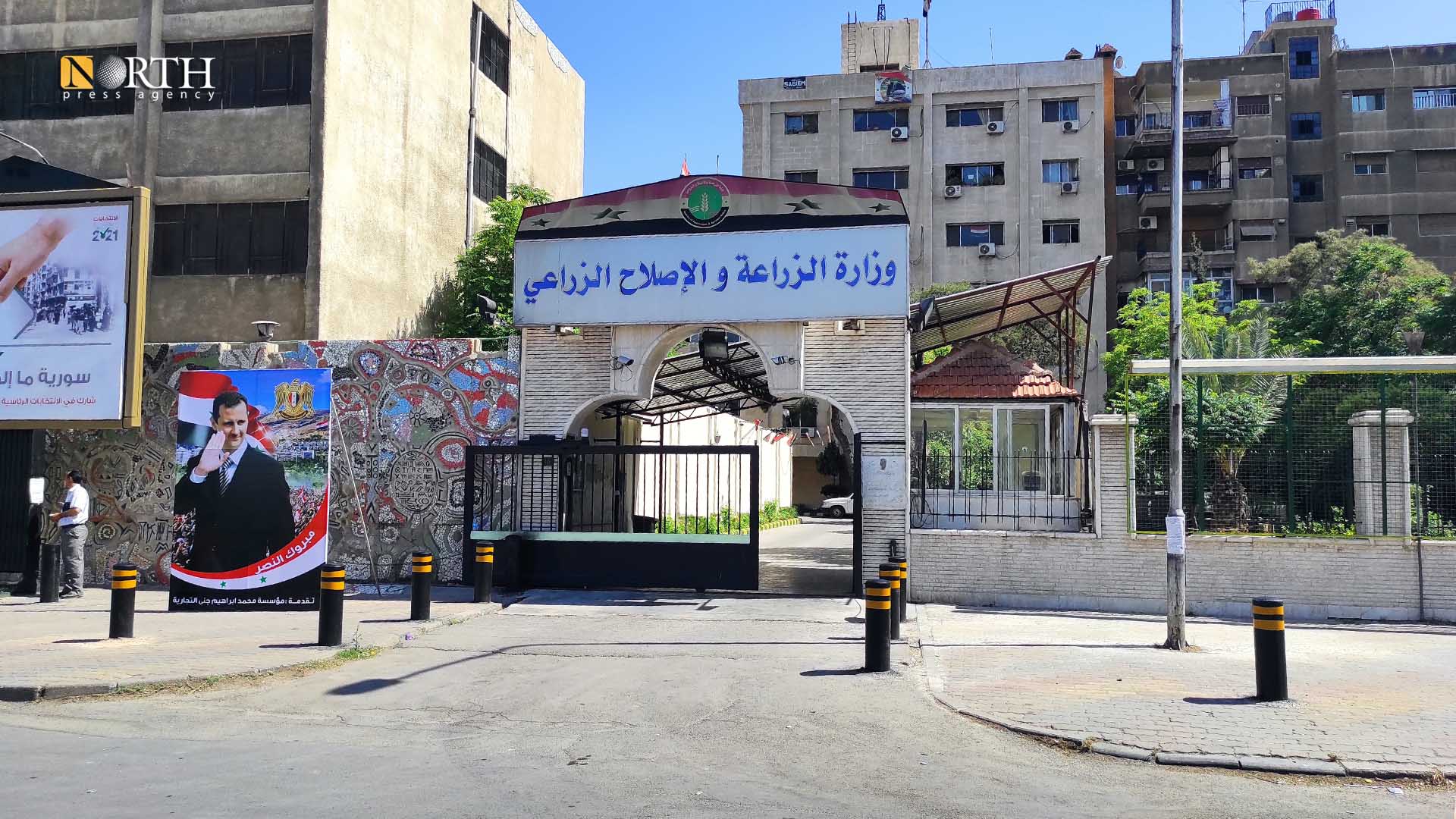DAMASCUS, Syria (North Press) – Fou’ad Omar (pseudonym), a farmer from Hama, central Syria, lost not only his wheat crop, but also all expenses he paid to cultivate his land of 15 acres as the production for this year will not cover all costs.
“The crops were damaged not only because of the government’s policy and lying regarding its ability to secure fertilizers and fuel, but also because of low rainfalls which had a great impact,” Omar told North Press.
In the current year, wheat crop was exposed to natural, climatic and governmental factors that foiled the plan of the Syrian Ministry of Agriculture which expected the production by about a million and 200,000 tons, according to what Muhammad Hassan Qatna, Minister of Agriculture said.
On May 15, Qatna estimated the production for 2021 for the rainfed lands at about 300,000 tons.
A million and 500,000 acres were cultivated with wheat and a million and 600,000 acres were cultivated with barely. “However, due to the drought and climatic changes including high temperatures and lack of water, the production has decreased,” Qatna said.
However, the minister’s words did not resonate with the farmer who said, “What is the benefit of Qatna’s estimates? Will he compensate my losses? Will he raise the price of buying wheat to cover our efforts and losses?”
Government fuel
In March, Syrian government set the price of buying wheat from the farmers at 900 Syrian pounds (SYP) per kilo, whereas Omar and other farmers believe that this price does not compensate their great losses in light of the high cultivation costs that they paid.
Before 2011, Syria’s production of wheat used to be four million tons that used to cover local consumption and the surplus used to be about a million, which was assigned for export.
During spring, irrigated lands did not witness adequate watering due to high prices of fuel which was not available in government subsidized price, which harmed the production, Suhail Hamdan, agricultural engineer from Ghab Plain in Hama, said.
Additionally, lack of rainfalls and fertilizers as well as the difficulty in obtaining biocides have great impact on production, according to the engineer.
This year, Khalid al-Omari, a farmer from Ghab Plain, sold his crop as fodder to sheep breeders in order to compensate a part of his loss.
“I lost about ten acres planted with irrigated wheat as a result of not securing government fuel,” al-Omari said.
For the past months, Syrian government-held areas have witnessed fuel crisis, which affected all aspects of social and economic life, suspending many professions and activities.
UN warning
In May, Syrian General Establishment for Grain allocated 450 billion SYP to buy wheat crop for 2021.
On May 12, Syrian Arab News Agency (SANA) cited Director General of the Establishment Youssef Qassem saying, the price of crops will be paid through agricultural banks within 48 hours of the date of delivering the crop.
“Receiving wheat and barley crops from farmers will start on May 20,” Qatna said on his Facebook account.
UN Food and Agriculture Organization (FAO) warned, in a report, that the cereal harvest in Syria this year will be less than the average, for several reasons, the most important of which is the drought that hit Syria’s northeast and the high costs of agricultural production.
“According to 2020 statistic, about 12,4 million people in Syria are suffering from food insecurity,” FAO said.
On May 17, Qatna confessed in a statement to the pro-government al-Watan newspaper that wheat production for this year does not cover the annual needs and that the Ministry will rely on the imported reserve quantities.
In an attempt to avoid bread crisis that is already witnessing long queues in front of bakeries, “the Establishment has concluded contracts to import quantities of about one million ton of Russian wheat,” Director General of the Establishment, Youssef Qassem said in a statement to al-Watan, on April 29.

